A Gaza photojournalist working for international media called on residents of the coastal enclave to cross the border into Israel on October 7, after Hamas terrorists had breached it, an HonestReporting investigation has found.
Mohammed Fayq Abu Mostafa, a freelancer who has been working for Reuters, made the comments while excitedly displaying footage of Hamas atrocities on an Instagram Live hosted in Gaza by another photojournalist, Ashraf Amra.
Amra has been working for AP, Reuters and APA Images, as well as for Turkish agency Anadolu. The investigation also found Amra had been honored with kisses by Hamas leader Ismail Haniyeh on two previous occasions.
The revelation casts doubt on the journalistic impartiality of the two freelance photojournalists and the vetting procedures of media outlets that have relied on their work.
The following information was compiled based on a probe of Amra’s and Abu Mostafa’s social media accounts. We also looked at articles and visuals published online and checked image databases of relevant media outlets.
“Whoever Can Go – Go”
On October 7, Amra hosted an Instagram Live from Khan Younis to provide updates following Hamas’ deadly cross-border assault on Israel, in which 1,200 people were killed and some 240 taken hostage.
During the broadcast, Amra willingly let a thrilled Abu Mostafa, who had just returned from Israeli territory, display the brutal acts that he had captured on his phone at the breached border area.
Amra can be seen laughing and smiling while Abu Mostafa presented footage of the lynching of an Israeli soldier:
Abu Mostafa went on to say: “We were there two hours ago, since the beginning.”
He detailed what he saw at the border and deep inside Israel, in Sderot. He described breaking into a room where Israelis were hiding before being taken by Hamas terrorists.
He then called on people to cross into the sovereign Jewish state: “Advice, whoever can go – go. It is a one-time event that will not happen again.”
And Amra replies: “Really, it will not repeat itself.”
Abu Mostafa’s border photos, one of which seems to show the lynching he had shared on Amra’s Live, were recently selected by Reuters and The New York Times to be included in their 2023 “Images of the Year.”
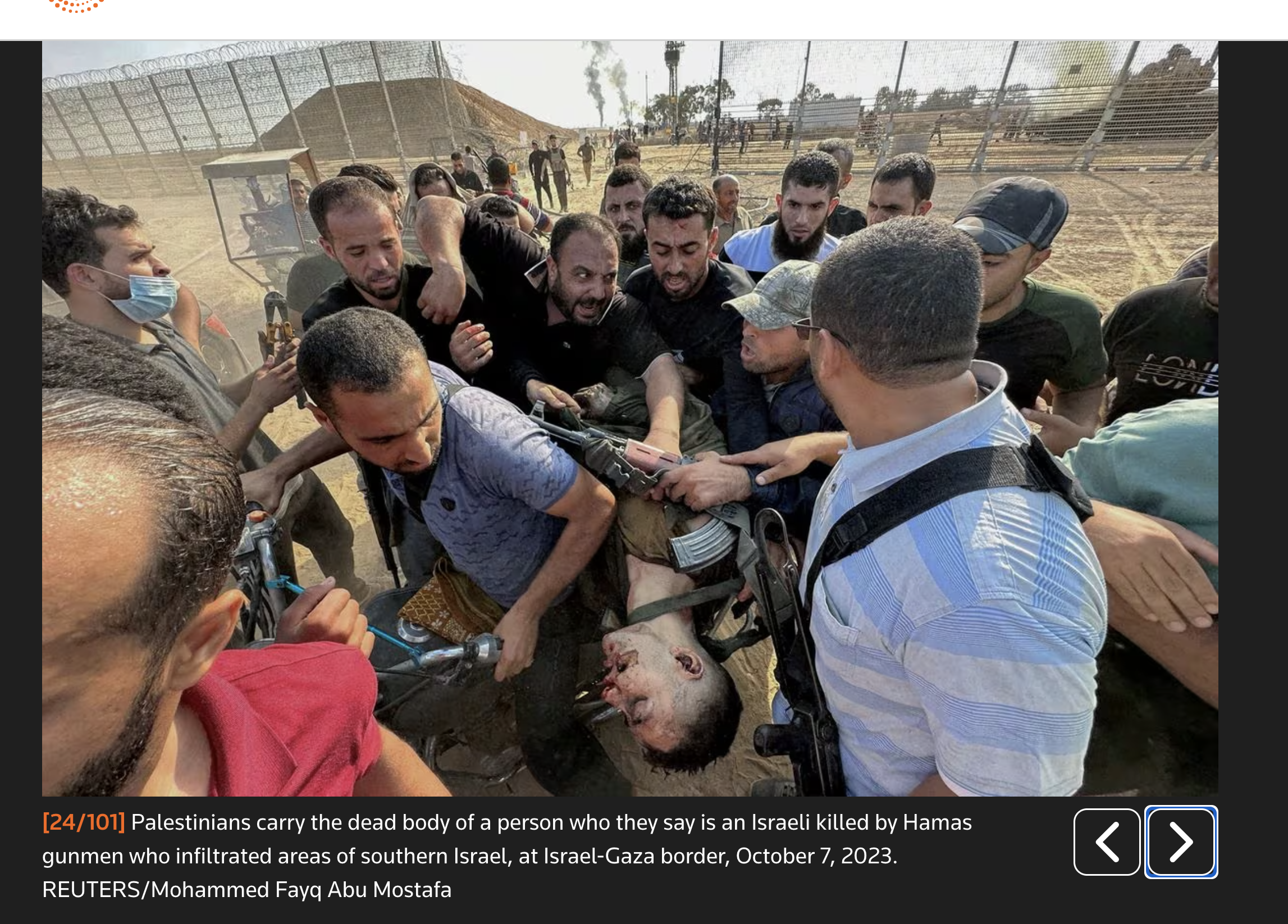
Related Reading: Broken Borders? Media Showcase Oct. 7 Pictures by Gaza Photojournalists as “Images of the Year”
Amra was also at the border earlier in the day. In the Instagram Live he said:
I just returned from the Khuza’a area, near the Khuza’a area on the eastern border of the Gaza Strip. Tens of armed Palestinian men are constantly storming the border toward the settlements around Gaza.
Some media outlets published a photo credited to “Ashraf Amra/Anadolu Agency via Getty Images,” showing a digger breaching the border fence. Reuters selected another photo by Amra, taken on October 7 inside Gaza, as one of its “Pictures of the Month” for October 2023.

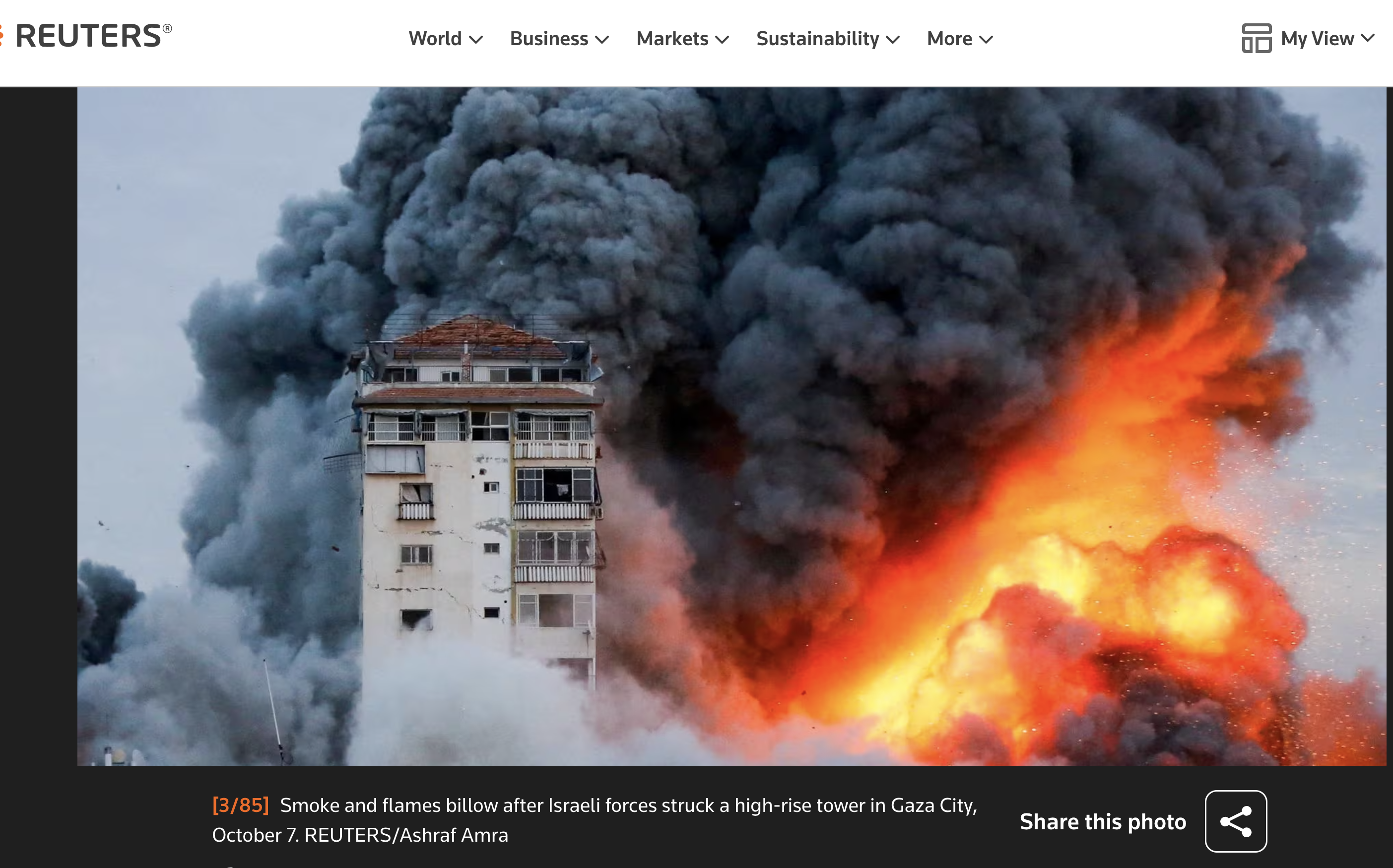
In November, HonestReporting published an expose that raised serious ethical questions regarding the early morning presence of Gaza photojournalists — including Abu Mostafa — at the breached Gaza-Israel border on October 7.
We questioned the morality and professionalism of those photojournalists who appeared to accompany Hamas terrorists on their rampage and inquired as to what level of knowledge these freelancers had prior to the Hamas infiltration, asking whether it was only physical borders that were breached.
Now, the exposure of a journalist who proudly proclaims he has been at the border “since the beginning,” coupled with his call to infiltrate Israel while displaying Hamas atrocities — crosses more boundaries.
Particularly when he had been given the platform to do so by another fellow journalist, who was happy to share it with his 188K Instagram followers.
Related Reading: Broken Borders: AP & Reuters Pictures of Hamas Atrocities Raise Ethical Questions
Kissed By Haniyeh
Amra’s willingness to utilize his social media channel in this manner may be explained by the special personal treatment he has received from Hamas leader Ismail Haniyeh.
In mid-September, the terror group leader paid a visit to Amra who was being treated for a hand injury in an Istanbul hospital.
Amra had been injured while covering Gaza border riots (without a press vest), and he blamed Israeli troops for targeting him.
In the photos and videos published after the meeting, Haniyeh is seen kissing Amra’s cheeks and arm cast.
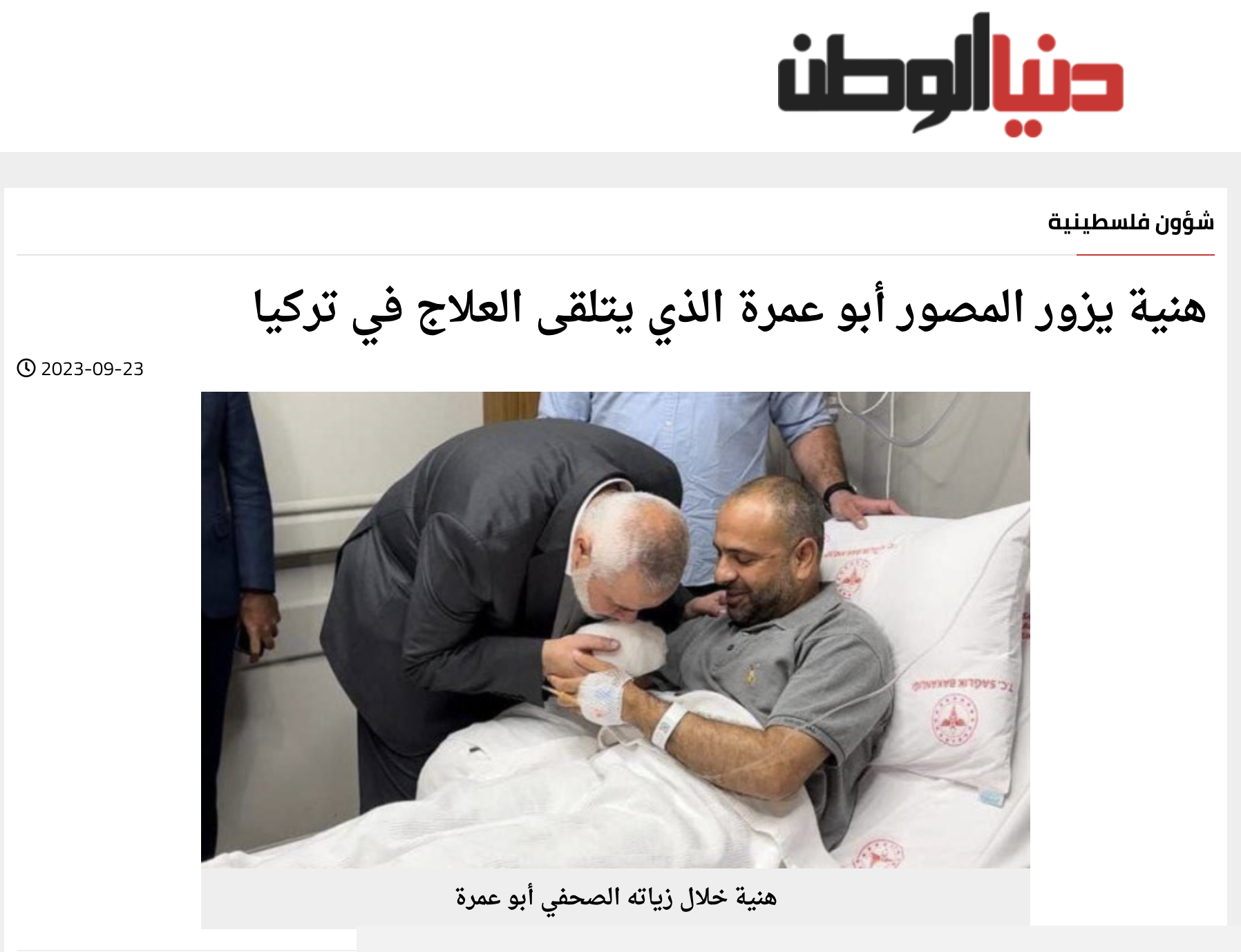
According to media reports, Haniyeh told Amra during the visit that he appreciated his role and that of the Palestinian media in exposing “the crimes of the occupation.” Amra replied that the injury won’t prevent him from returning to his “national role.”
The high-profile hospital visit was not the first time Haniyeh had honored the veteran photojournalist, to whom he presented an award back in 2012:
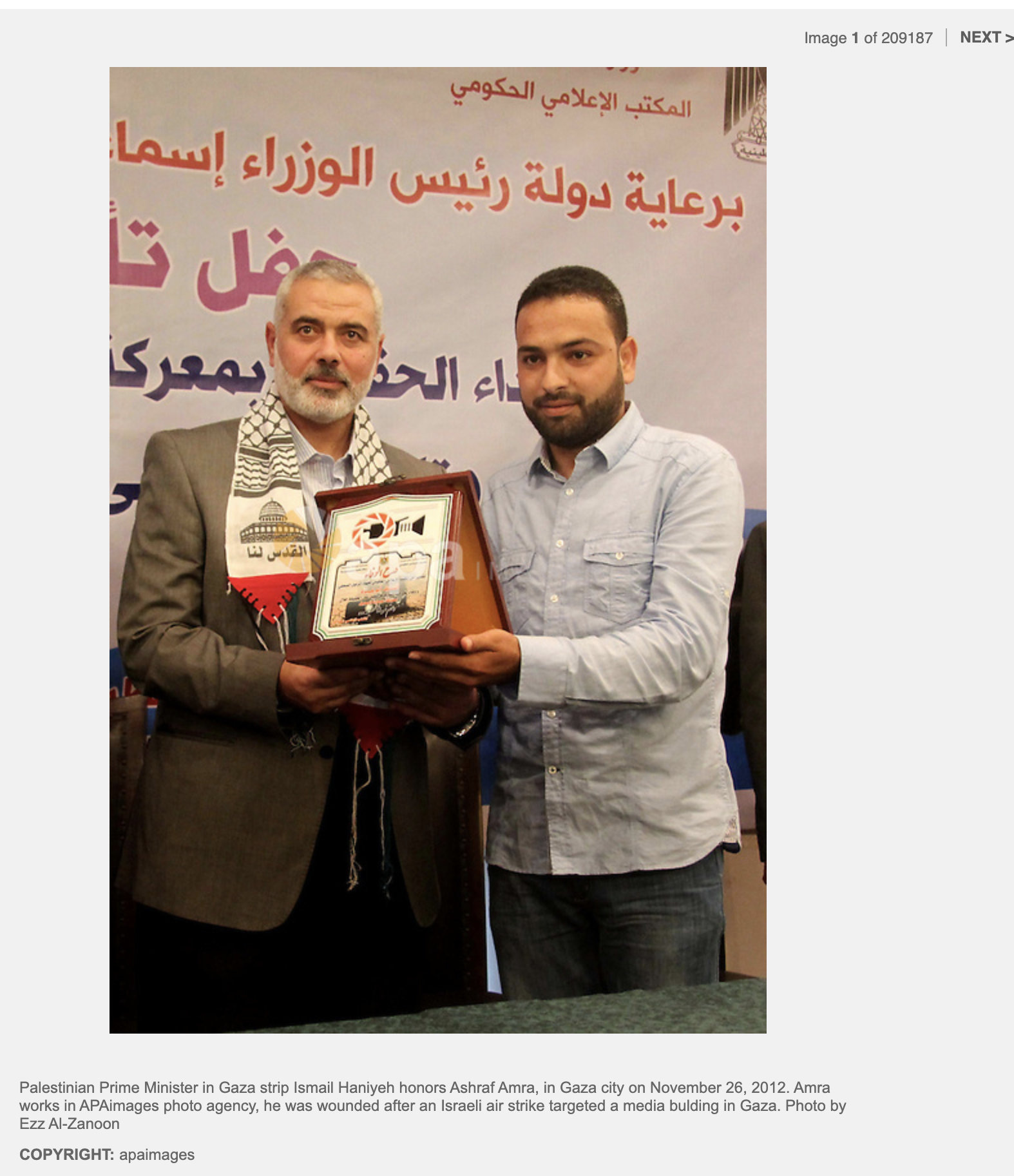
Does Haniyeh provide such VIP treatment to every Gaza-based journalist who may have been injured while working? What is the nature of his connection with Amra? Does it explain Amra’s easy access to coverage of Hamas leadership and training in Gaza?
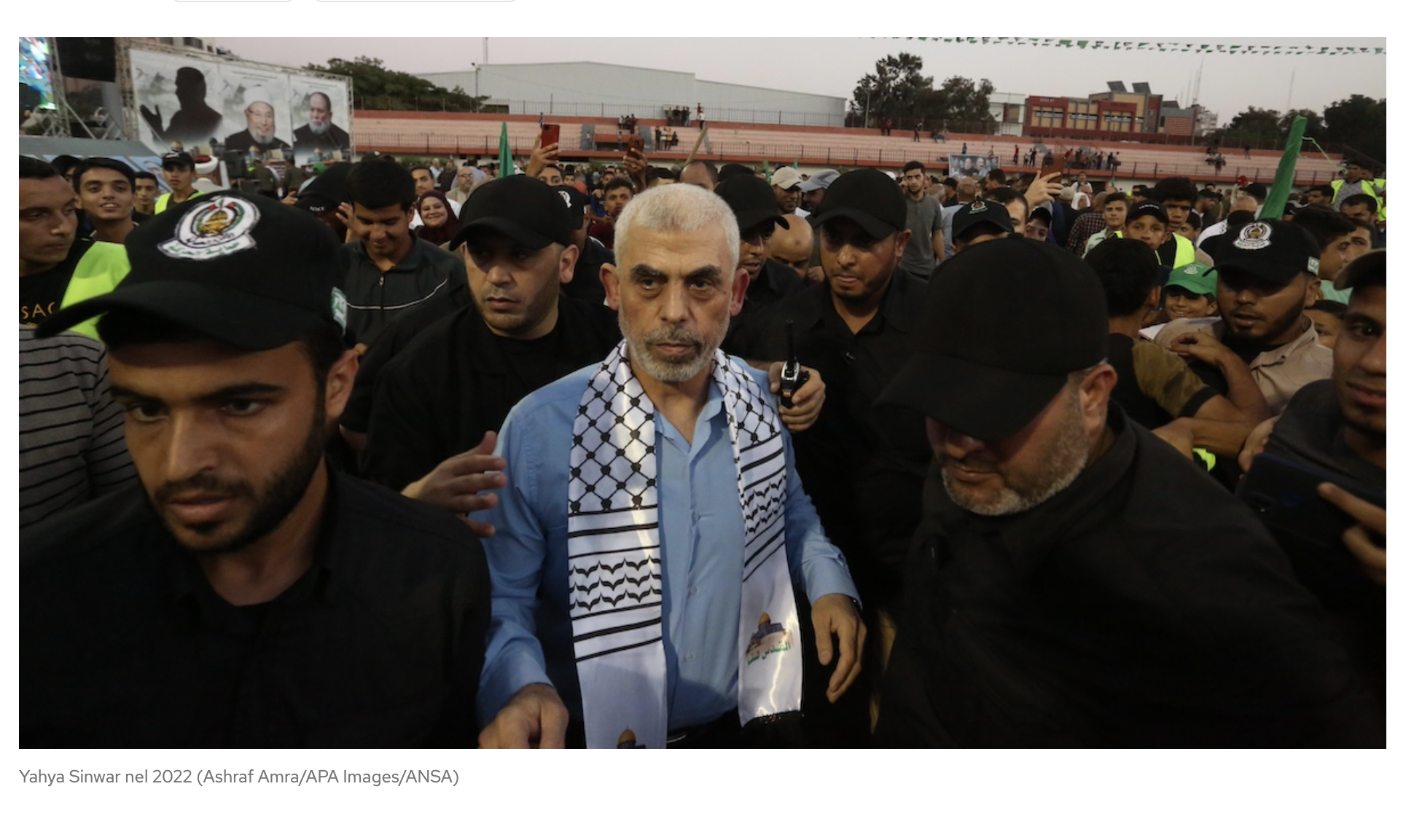
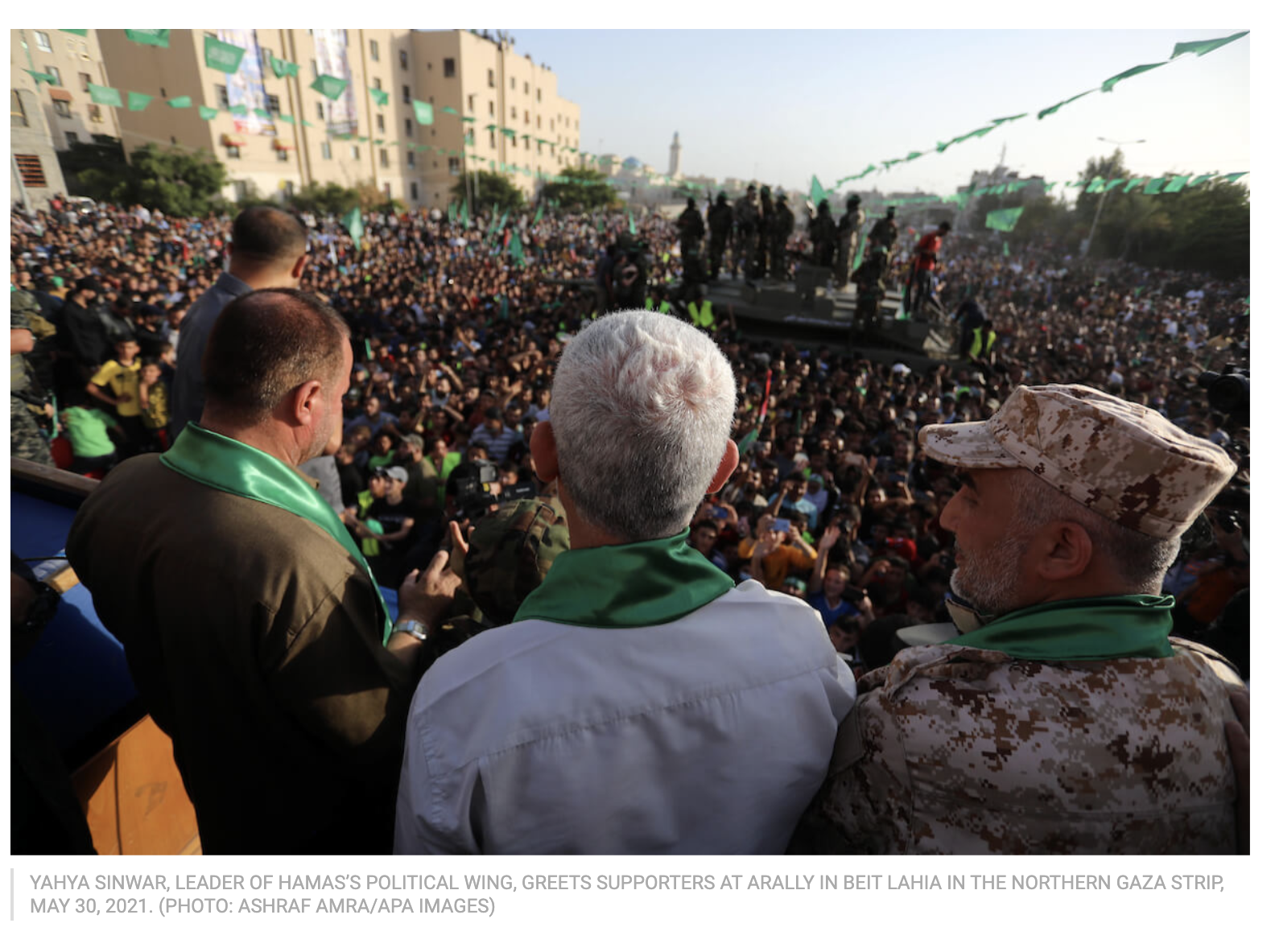

Interestingly, according to the Meir Amit Intelligence and Terrorism Information Center, Amra has also been working alongside Hassan Eslaiah, a freelance photojournalist whose infiltration into Israel and close ties with Hamas leader Yahya Sinwar were detailed in HonestReporting’s expose in November. Subsequently, AP and CNN cut ties with Eslaiah.
All of the above should sound the alarm bells for news organizations and their audiences worldwide.
The exhilaration at the display of Hamas atrocities, along with the sharing of a call to infiltrate Israel, where Hamas had been brutalizing, raping and murdering innocent Israelis on October 7, are appalling in their own right.
So is the flattery their actions earned from the head of a genocidal terror organization.
There are serious questions for the international media outlets who prominently showcased these photojournalists’ work:
- Did they vet Amra and Abu Mostafa before publishing their work?
- Were any outlets aware of the photojournalists’ social media activity and of Amra’s recognition by the leader of a proscribed terror group?
- What exactly are their vetting procedures for freelancers in Gaza?
- And, if there are different codes of conduct for freelancers vs. permanent staff, then why isn’t that disclosed on every article that a freelancer works on?
A commitment to journalistic ethics should prompt the news organizations we have named to answer these very basic questions.
And basic humanity should compel them to answer these questions.
Liked this article? Follow HonestReporting on Twitter, Facebook, Instagram and TikTok to see even more posts and videos debunking news bias and smears, as well as other content explaining what’s really going on in Israel and the region. Get updates direct to your phone. Join our WhatsApp and Telegram channels!
Photo Credit: Abed Rahim Khatib via Flash90

